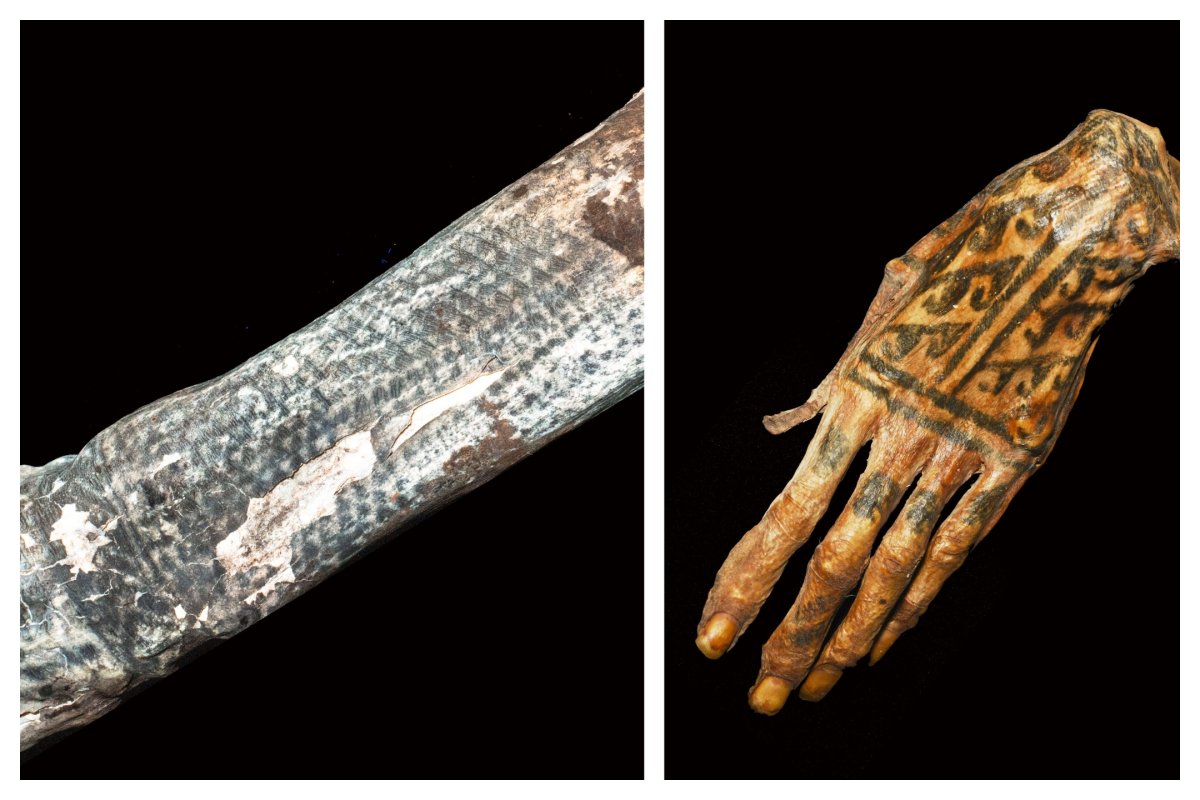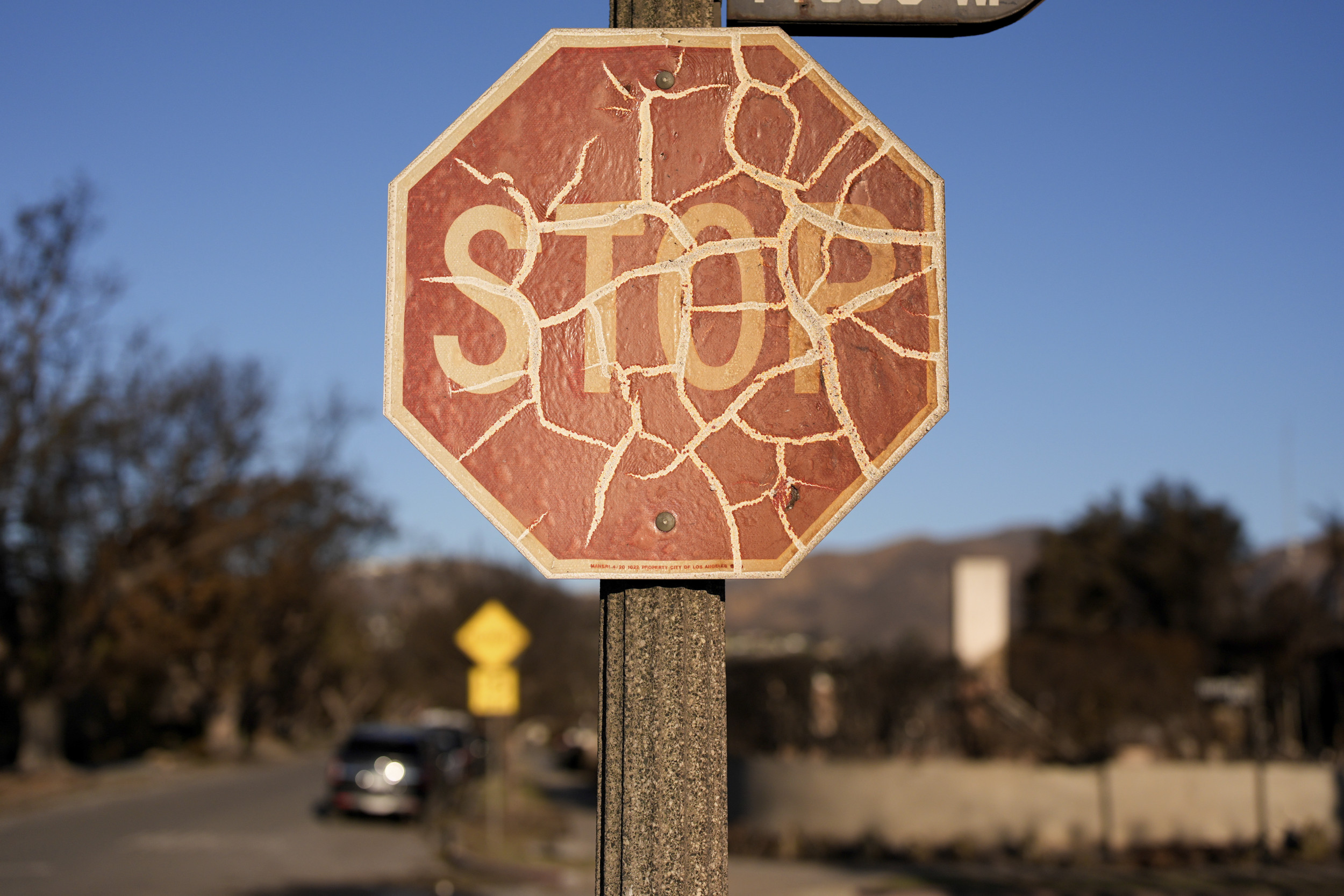Researchers have unveiled long "hidden" and finely detailed tattoo designs on the skin of ancient mummies from Peru, a study reports.
Tattoos were a prevalent art form in pre-Hispanic South America, as attested by the discovery of mummified human remains in the region with preserved skin decoration that date back centuries, and even millennia.
While such body art works can provide insights into ancient cultures, tattoos are known to fade and bleed over time—a process compounded in mummies by the decay of the body. This often means that the original designs are difficult to make out.
In the latest study, published in the journal Proceedings of the National Academy of Sciences, a team of researchers used a technique known as laser-stimulated fluorescence (LSF) to examine tattoos on mummified individuals belonging to the pre-Hispanic Chancay culture of what is now coastal Peru.

"LSF is a non-destructive imaging technique that uses laser light to make objects glow in the dark. The glow or 'fluorescence' they produce can often visualize otherwise hidden information," study lead author Michael Pittman, with the Chinese University of Hong Kong, told Newsweek.
"This study is the first time this technology has been used to study ancient tattoos and we believe our results show that it will continue to be an important tool for tattoo analysis in the future," he said.
The mummified remains that Pittman and colleagues examined were originally discovered in 1981 at the Cerro Colorado cemetery archaeological site in the Huaura Valley of Peru. Now housed in a museum, some of the remains have been radiocarbon dated to between A.D. 1222 and 1282. Others that have yet to be analyzed may date as far back as A.D. 900—the estimated origin of the Chancay culture.
In the study, the researchers scanned the laser over the mummified skin in a dark room and took long-exposure photographs. The skin glowed brightly, creating a stark contrasting with the dark, non-fluorescent tattoo ink on and within the skin. This revealed "exceptionally fine" and previously unknown details of the ancient tattoos.
"As the laser light could penetrate into the skin to the depth of tattoo, we were able to see past the ink 'bleed' that had accumulated during the life of the tattooed individuals to see the original tattoo design. In doing so, we achieved a new capability in the study of tattoos that had never been achieved before," Pittman said.
The team managed to identify intricate geometric and zoomorphic (representing animal forms) designs that were "very surprising" because they demonstrate a higher degree of artistic complexity than any other existing Chancay artwork, including on pottery and the culture's renowned textiles.
The fine tattoo lines on the mummified are only 0.1–0.2 millimeters thick, according to the study. This cannot even be produced by a standard #12 modern tattoo needle, which is 0.35 millimeters thick.
"These special, high-detail tattoos mainly have geometric designs featuring triangles, but some have other designs including of 'vines'. These special tattoos required extra skill and effort to make suggesting that some Chancay tattoos probably carried more significance than others," Pittman said.
The tattoos appear to have been created with a needle-based method used traditionally in many cultures around the world, according to the researcher.
The art of tattooing was clearly important to the Chancay, as evidenced by the high proportion of tattooed individuals among known mummified remains from the ancient culture.
"The similarity of the artworks depicted to [those] on their other artistic media also suggests this. Even some of their pottery human figures depict tattoo designs! Our new findings suggest that some tattoos were even more significant that we thought, with levels of detail exceeding any other known Chancay art, including their famous textiles," Pittman said.
"Our study provides an important new tool for the study of ancient tattoos."
Do you have a tip on a science story that Newsweek should be covering? Do you have a question about archaeology? Let us know via science@newsweek.com.
Reference
Kaye, T. G., Bąk, J., Marcelo, H. W., & Pittman, M. (2024). Hidden artistic complexity of Peru's Chancay culture discovered in tattoos by laser-stimulated fluorescence. PNAS, 122(0). https://doi.org/10.1073/pnas.2421517122




















 English (US) ·
English (US) ·